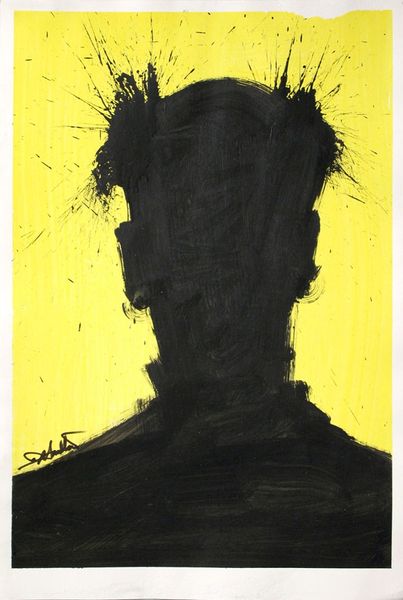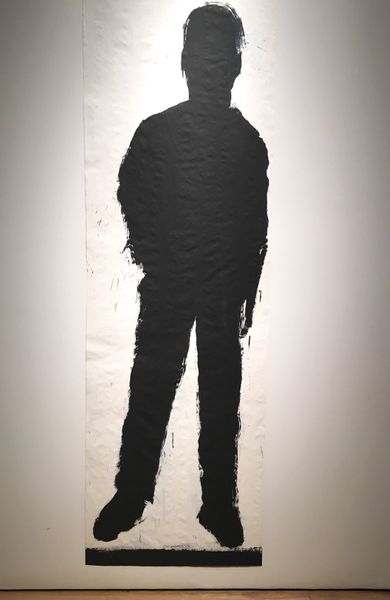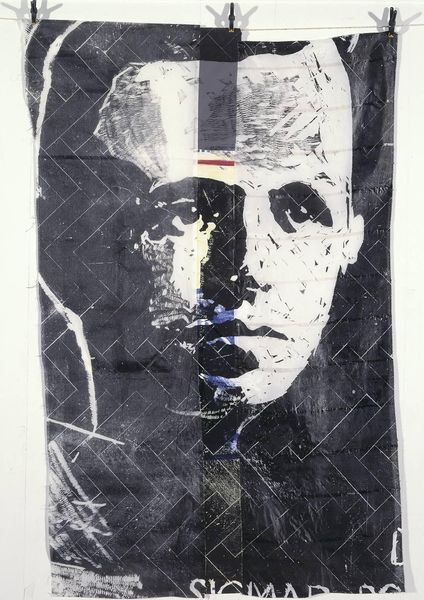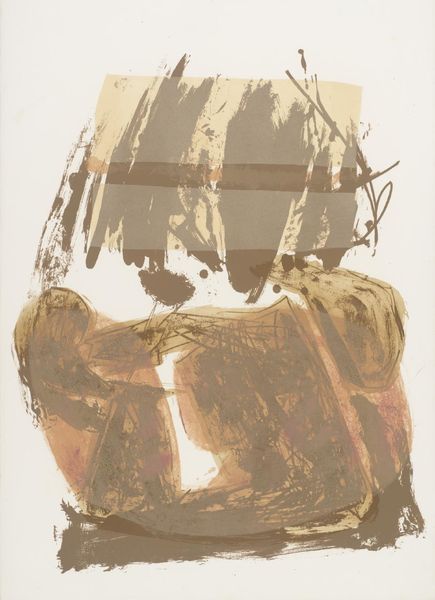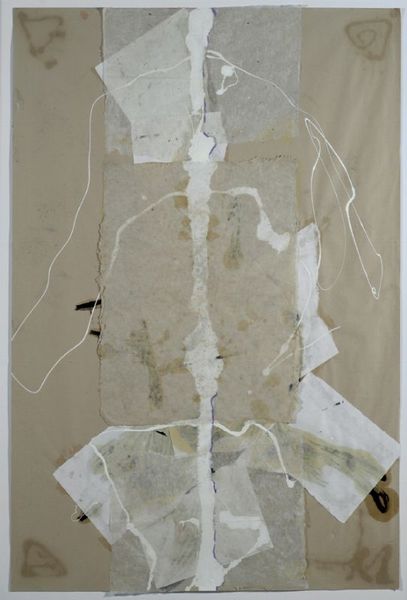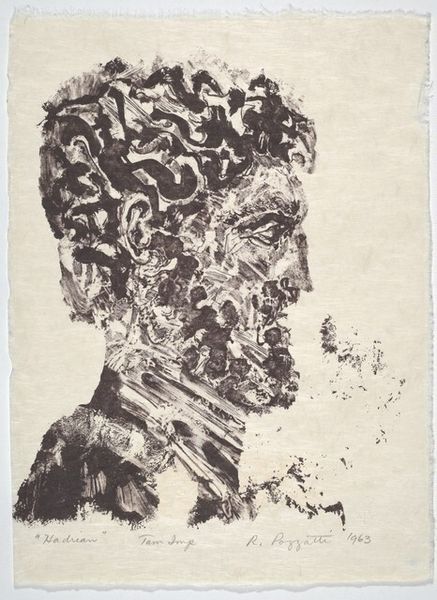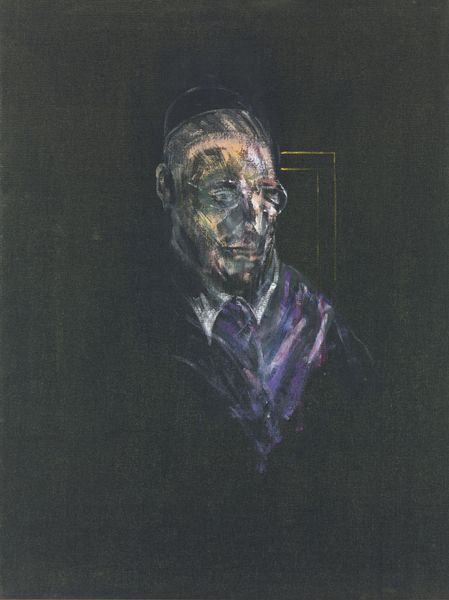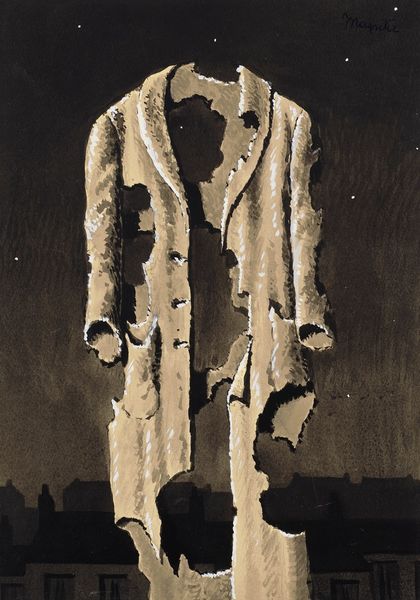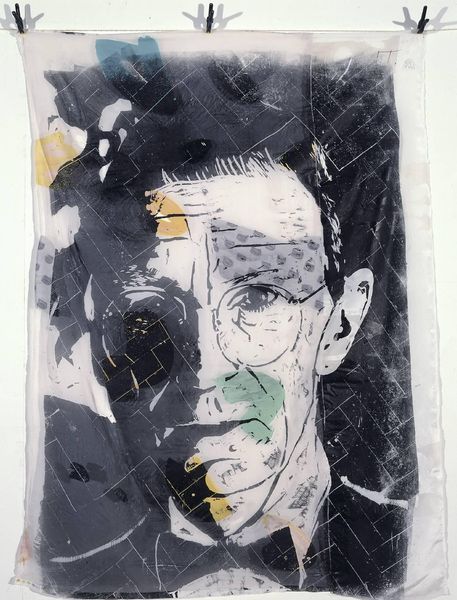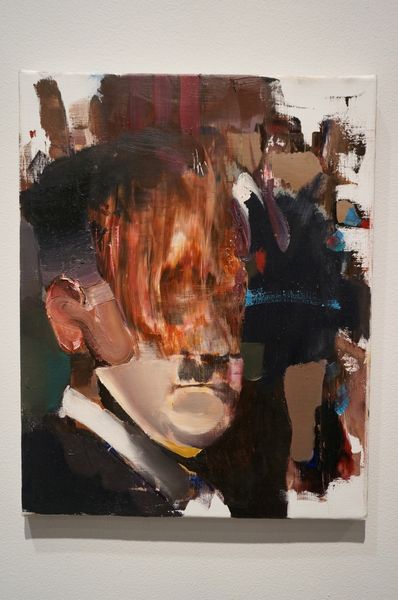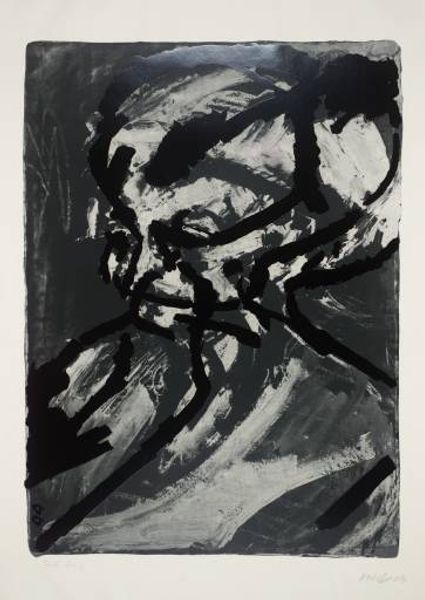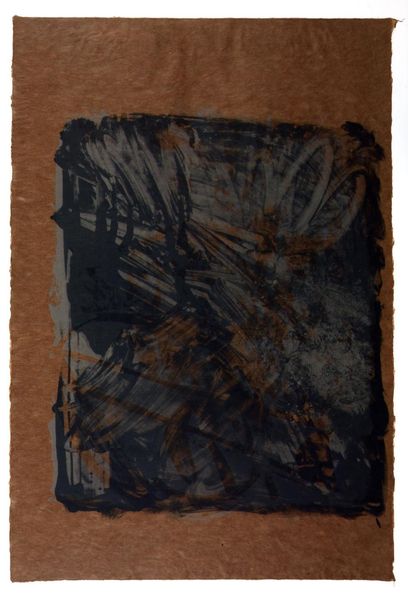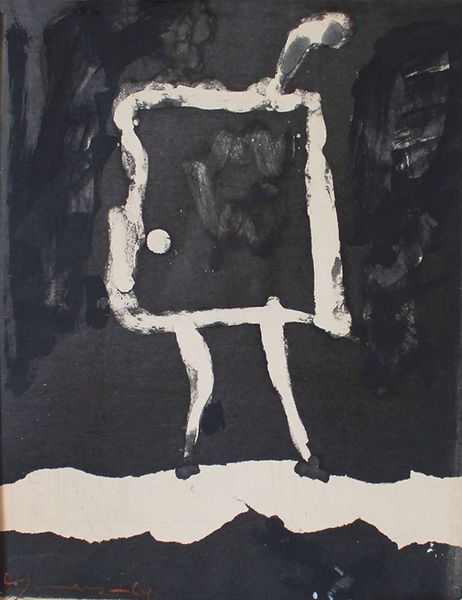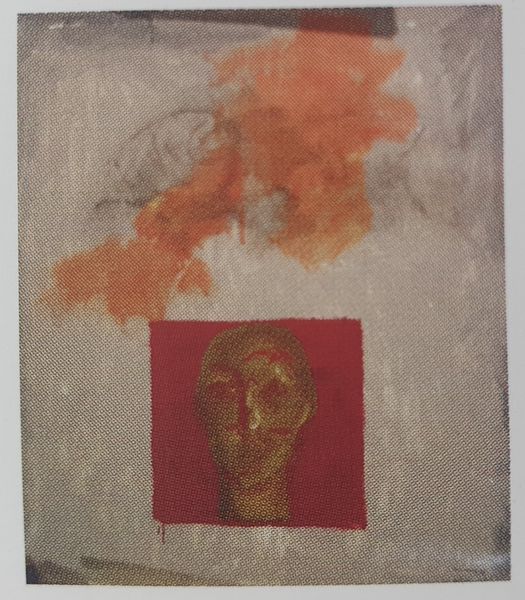
mixed-media, oil-paint, gold, impasto
#
mixed-media
#
oil-paint
#
gold
#
charcoal drawing
#
charcoal art
#
oil painting
#
impasto
Copyright: Richard Hambleton,Fair Use
Curator: Richard Hambleton's "Shadow Head Portrait Gold" from 2004 employs mixed media—oil paint, charcoal, and gold—to present an enigmatic figure. The shimmering gold surface gives it an almost regal air, doesn’t it? Editor: It does. But beneath that veneer, there’s a haunting quality, like a ghost trying to materialize. The impasto technique seems to build up the surface, yet the image remains indistinct, fading into the white ground. Curator: Absolutely. The “shadowman” motif, for which Hambleton is best known, is crucial to consider in the context of New York City in the 1980s. A time rife with anxiety, urban decay, and the AIDS epidemic. These weren't just portraits, but embodied fears and uncertainties. They represent a society struggling with invisibility and neglect. Editor: That connection to the urban landscape is key. Hambleton’s early work consisted of street art—figures wheat-pasted in back alleys and dark corners. Taking this approach to a gallery setting raises questions of value. Coating the image in gold elevates it, but is this also commentary on art's commodification, a gilding of the urban experience? Curator: It's about challenging social hierarchies. It seems like Hambleton, in rendering the ‘shadowman’ with luxurious materials like gold, elevated the marginalized, demanding their visibility in both social and artistic spheres. And this echoes similar arguments concerning portraiture more generally across the western canon, that sitters are figures that warrant documentation in order to be seen. Editor: True. And it also draws attention to the artist's process itself. Look at the drips and the loose, expressive brushstrokes; it seems like an uncontrolled, chaotic application. It rejects any refined technique for the labor of layering different textures, each with a social resonance that complicates the surface’s reading. Curator: So, it seems to invite viewers to question both historical context and contemporary realities. This painting, for instance, compels us to contemplate visibility, precarity, and perhaps even redemption through the transformative power of art. Editor: It pushes the boundaries of artistic value. Its shimmering presence invites the audience to reconsider the roles of material and process in translating societal tension and the urban fabric onto canvas.
Comments
No comments
Be the first to comment and join the conversation on the ultimate creative platform.
